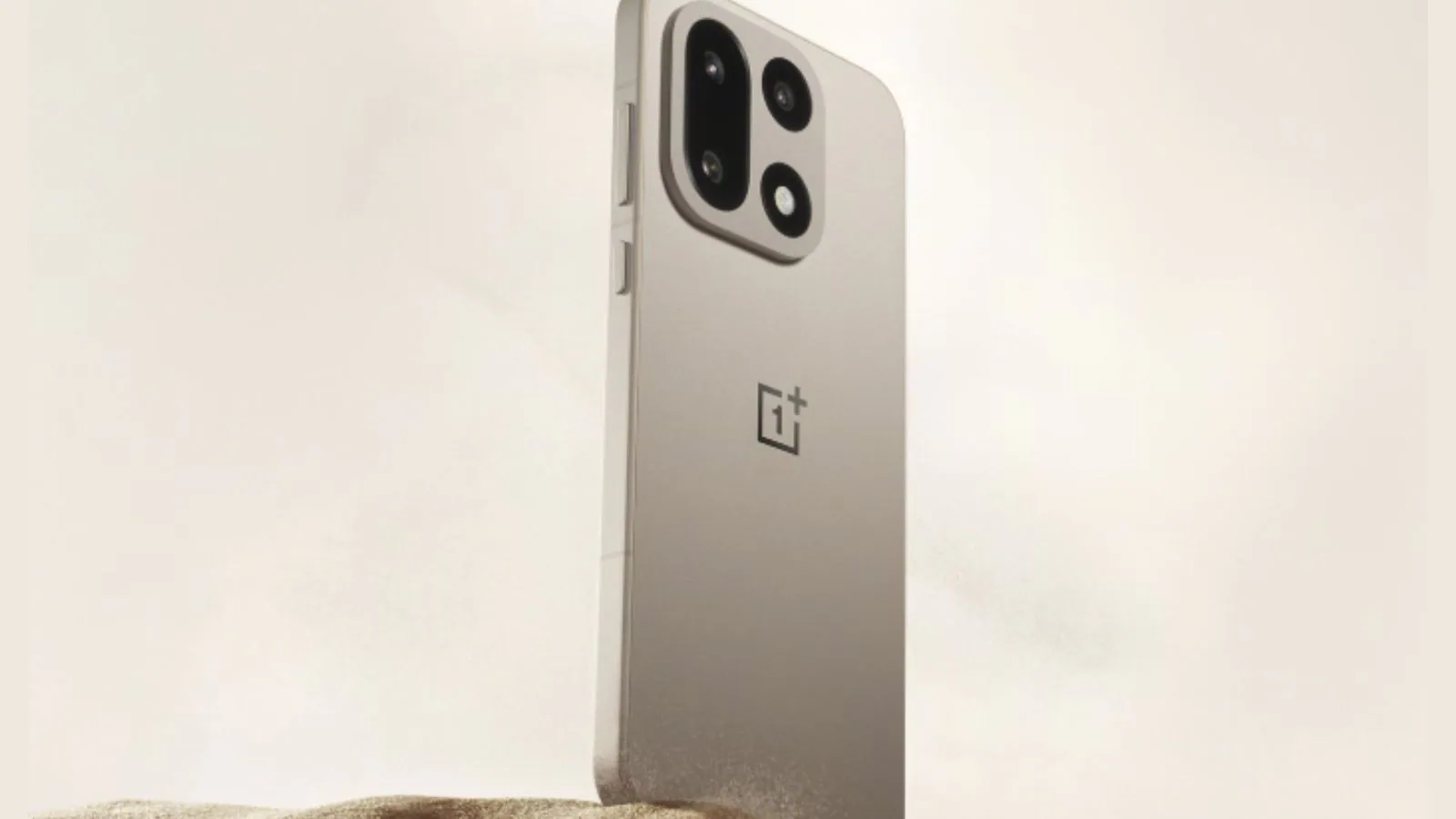Copyright Fast Company

There’s a new AI companion in town. Just don’t call it that. Launching today, Stream Ring is a wearable device that lets you capture your thoughts, brainstorm ideas, prepare for an interview, or—if you’re the company CTO’s 7-year-old child—simply learn about dinosaurs. The ring, which comes in silver ($249) and gold ($299), with a black resin contour on the inside, is available to preorder now, with shipping to begin in summer 2026. It only listens when you press and hold on its miniature touchpad, a bit like a walkie-talkie. You wear it on your index finger, raise it to your lips when you want to save that brilliant idea you just had, or find a quick recipe for Japanese eggplants, and press to record. The ring confirms it’s listening with a gentle haptic vibration, then transcribes your thoughts onto an accompanying app. Unlike the much-reviled Friend AI pendant, which types answers to your query on its app, Stream Ring talks back into your earbuds, while also saving its answer into the app. The ultimate goal? To help you bridge the gap between your thoughts and your words. Subscribe to the Design newsletter.The latest innovations in design brought to you every weekday Privacy Policy | Fast Company Newsletters A more intimate information-ecosystem? Stream Ring was designed by Sandbar, a New York-based startup that calls itself an “interface company”—an intentionally vague description that is intended not box in its founders’ ambitions. It was cofounded by Mina Fahmi (CEO) and Kirak Hong (CTO), who first met at CTRL-Labs, the neural band startup that was later acquired by Meta. Fahmi defines an interface as the “point where two disparate things become one.” “When we say ‘interface company,’ we mean that we will do whatever it takes to bridge gaps,” he says. In the case of Stream Ring, that gap in question is the one preventing people from fully expressing themselves. The challenge could stem from UX friction: it takes a lot of work to dig up your phone in the middle of a dog walk, and pull up your voice memos app to record your fleeting thought. It could also stem from social norms: would you really pull out a phone in the middle of a buzzing coffee shop to record a deeply private matter? The way Sandbar has packaged the experience into a ring could solve for both of these pain points. During a recent demo at Sandbar offices, in Manhattan, I was seduced by the immediacy of the interaction: bringing a hand to our mouth is a natural gesture that many of us do without even realizing it. And the act of covering your mouth with your hand promises built-in intimacy. The bigger question right now, as it pertains to AI, is: who will this benefit? The AI hardware crisis AI hardware is having a bit of an existential moment. After years of promises about tech that would quietly live in the background of our lives, most of the products that tried to make AI feel ever-present have either stumbled or disappeared. The Humane AI Pin was hypped as a screenless smartphone replacement before it flopped under the weight of its own ambition and a $699 price tag. The Friend pendant, which billed itself as a minimalist companion for capturing spontaneous thoughts, has been criticized for being more gimmick than breakthrough. The question hanging over all of this is whether AI wearables can justify their existence beyond novelty, or whether these AI gadgets are still searching for the problem they’re meant to solve. Whether Stream Ring ends up sitting inside this shaky ecosystem or at the edge of it will largely depend on how it’s perceived by the general public. That the founders are shying away from calling it an AI companion suggests they know how fraught the term can be. Instead of foisting yet another AI-powered device onto a tech-hungry audience, they are marketing themselves to the curious, introspective, creative types who like to live an examined life. As someone who keeps obsessive notes about story ideas and various characters I meet on the subway, I can see the appeal of a device that eliminates the friction that comes with most note-taking apps. I also appreciate the ring’s ability to meet me where I am, which is usually somewhere, listening to music. If a thought bubbles up mid-song, pressing on the ring’s touchpad will pause the music, and capture my voice, before resuming the music. I can also hit pause, skip a track, and control the volume all with a few very intuitive gestures on the touchpad. If Stream’s AI goes off track, or says something I need clarified immediately, I can also interrupt it mid-sentence. “We find that really changes the dynamic from one of a companion or an assistant to something that is an extension of you that’s fully in your control,” says Fahmi. advertisement Stream ring as an extension of yourself A large part of the ring’s promise comes from the AI’s voice itself. Unlike Siri or Alexa, which let you select from a predetermined number of voices, Stream Ring models its voice on your own voice by creating a voice doppelgänger of sorts. After reading a linguistics passage that covers a wide range of sounds and sound combinations found in English, I was startled to hear an oddly familiar voice talk back at me. The experience felt like talking to my alter-ego—a version of me that felt, as Stream Ring put it to me when I asked what it thought of being my voice twin, “like being my echo.” “We found that it’s best for the voice to be either identical, or 80% similar, and we shoot for 80% similar,” Fahmi told me. (Most people who have tested the ring so far choose to keep the inner voice.) The effect, though disconcerting at first, is meant to emulate self-talk, which should facilitate self-discovery. “I think when you’re building a computer, it’s easy to say, let’s just connect humans to computers better,” says Hong. “That’s one way to think about it and that’s part of our mission, but the bigger part of our journey, I believe, is when you start to talk with yourself. I hope we get to know ourselves better.” While scrolling through previous notes he took on the Stream app, for example, Hong was surprised to learn how much he talks about gardening. “I get to know what I really care about,” he says. The future of Stream Fahmi and Hong launched Sandbar in 2023. Two years in the making, the ring first began as a prototype roughly the size of matchbox. It had a mic, a button, and a “very poorly wired computer inside,” says Fahmi with a laugh. The next iteration looked like an adjustable ring that you could press to tighten around your finger, but it was still too bulky. The current version is much more elegant, though it remains quite visibly a “smart ring” that you probably couldn’t disguise as jewelry. For now, the device works best online, though offline features are in the pipeline. The version that I tested has general knowledge pulled from the internet, but no deep knowledge or internet lookup abilities that would allow anyone to go into a rabbit hole about, say, black holes. On the flip side, it is 100% accurate and it does not hallucinate. The Stream Ring’s “personality” was designed to be curious, compassionate, and concise. Unlike most current LLMs, which are prone to flattery, Stream was designed to sound like you are bouncing off a thought you just had in your head versus talking to a person you just met. Naturally, then, every Stream Ring might behave a little differently, based on the information it gleans from its user. Fahmi says his ring sometimes pushes back on what he says, but it mostly sounds like him, “because it’s sharing my experience.” By contrast, when he was listening to the way an investor’s ring responded back to him, he found the ring was “way sharper with him.” It’s still too early to tell if people will embrace interacting with AI with the fervor investors expect. (Sandbar has raised $13 million in venture capital so far.) If I were writing a dystopia, I would envision a world in which, comforted by the shield of an AI entity that doesn’t judge or ghost you, humans retreat into tech bubbles and forget to talk to one another. A utopia, meanwhile, might find people, recently endowed with the self-knowledge of an expanded mind, taking life by the horns. The hope, of course, is that more people resonate with the latter category than the former, though more likely than not, reality will oscillate between the two. When asked if the device might encourage isolation and an over-reliance on technology, Hong says that, as a father of two, he wants to make an AI product that is safe, useful, but also meaningful to his kids. “My son loves talking [to his ring] about dinosaurs, but that doesn’t mean he never comes back to me and talks about the dinosaurs he’s just learned,” he says. “He still loves the eye contact.”



